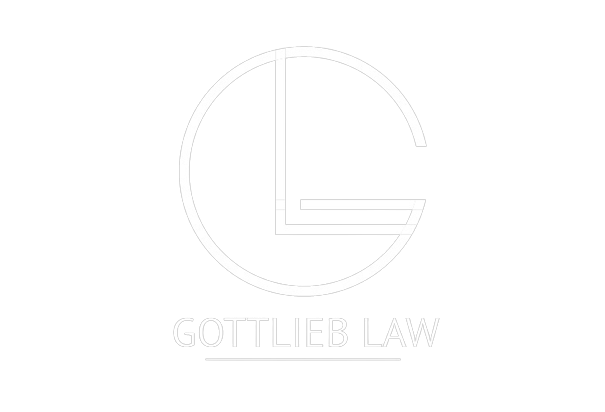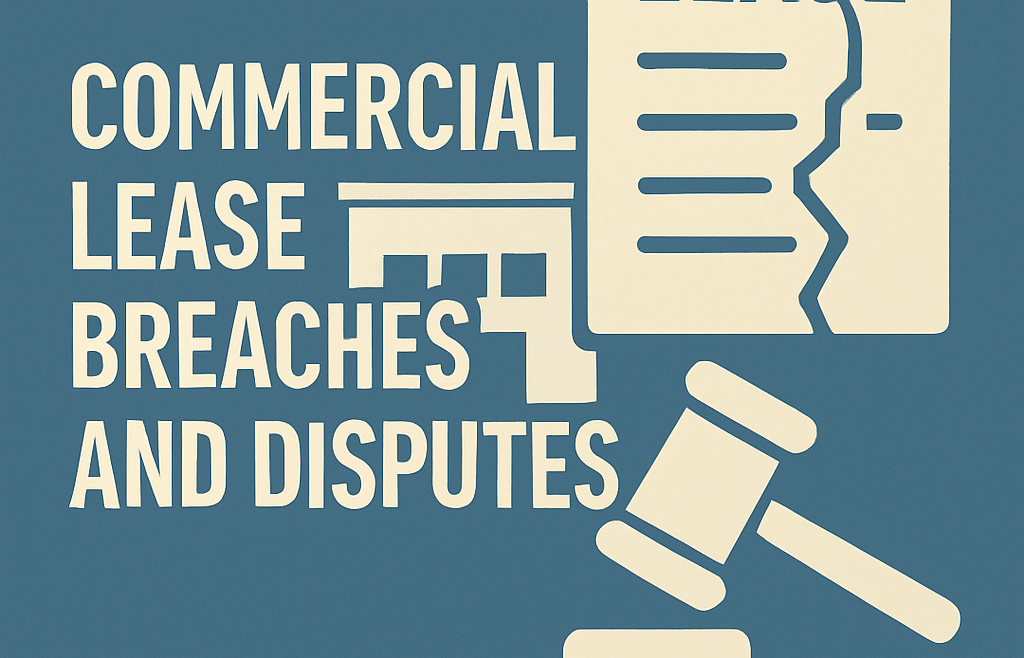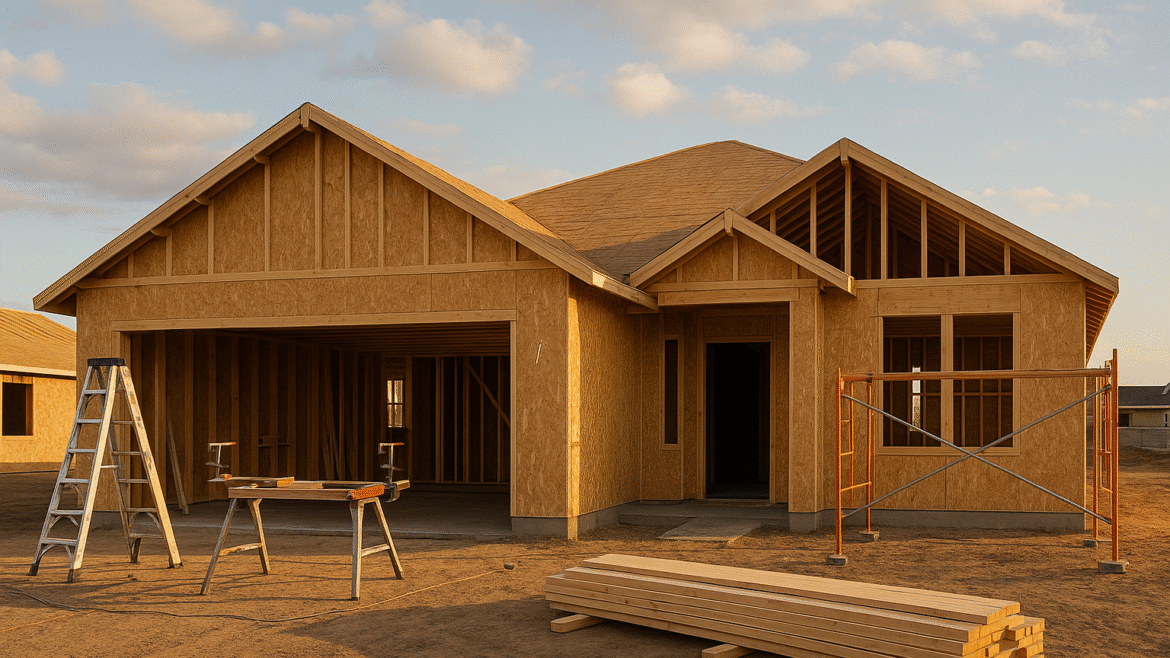Gottlieb Law, PLC provides this article for information purposes only and nothing herein creates an attorney-client relationship. You should not take any actions in reliance on any of the information contained herein without consulting with qualified legal counsel first and reading this article is not a proper substitute for seeking legal advice of your specific situation. Laws change over time and you should seek counsel to discuss any specific legal questions.
Why Understanding Commercial Lease Disputes in Arizona Matters
In Arizona’s fast-moving commercial market, leases form the foundation of countless business operations, from warehouse spaces in Tempe to storefronts in Scottsdale. And when one side fails to meet their lease obligations, the fallout can be expensive and disruptive. Whether you’re a landlord trying to enforce an agreement or a tenant facing unexpected claims, it’s important to understand what qualifies as a breach, what rights and responsibilities come with it, and how to resolve disputes when they arise.
Lease issues aren’t just paperwork problems. They’re legal matters that can have a serious financial impact. Smart planning backed by the right insight can shield your business from avoidable risks and unnecessary costs.
What Counts as a Commercial Lease Breach in Arizona?
While the terms “breach” and “default” are often used interchangeably, most commercial leases in Arizona define specific defaults that trigger legal remedies—so whether a violation gives rise to immediate consequences often depends on the language of the lease.
Understanding what constitutes a commercial lease breach is the first step in protecting your rights, whether you’re the landlord enforcing the lease or the tenant defending your position. In Arizona, these disputes are rarely black and white. Lease agreements are often packed with complex terms, conditions, and legal language that can make it difficult to determine when a breach has actually occurred—and what happens next.
Defining a Commercial Lease Default or Breach
When either the landlord or tenant fails to follow the terms laid out in the lease, it’s generally a default or violation of the commercial lease. These obligations are laid out in the lease contract and can involve everything from timely rent payments to property maintenance or restrictions on how the space is used.
A default can be either explicit, such as failing to pay rent, or implied, like interfering with the other party’s quiet enjoyment of the premises. Either way, Arizona courts look at the specific language of the lease and the impact of the violation before deciding what remedies are available.
Common Triggers That Lead to Lease Disputes
Some lease violations happen more often than others. Below are the issues that most frequently lead to legal conflict between commercial landlords and tenants:
1. Non-Payment or Late Payment of Rent
This is one of the most common and straightforward reasons landlords pursue legal action. Unless the lease provides a grace period or alternative terms, tenants who consistently pay late—or stop paying altogether—are typically in default.
2. Unauthorized Alterations to the Property
Commercial tenants may want to modify the leased space to better suit their business. However, if they move forward without written approval from the landlord, particularly with structural or electrical changes, it may be considered a violation of the lease.
Even cosmetic alterations can violate the lease if they’re done without consent or if they affect the building’s value, safety, or code compliance. Most leases spell out what’s allowed and require formal approval before any work begins.
3. Violation of Use Clauses
Commercial leases often contain use clauses that restrict the type of business activity allowed on the premises. For instance, a lease may prohibit using the space for food service, manufacturing, or high-traffic retail operations. Tenants that deviate from the permitted use risk violating the lease.
In multi-tenant buildings, these clauses are often used to protect existing tenants and maintain a balanced tenant mix. Landlords may have legal standing to enforce these terms even if the tenant’s new use seems harmless.
4. Failure to Maintain the Premises
Maintenance obligations are typically outlined in the lease and can be shared between the landlord and tenant depending on the lease type (e.g., triple-net vs. gross lease). Failing to handle responsibilities like interior repairs, general upkeep, or HVAC maintenance can put tenants in breach of their lease.
If the lack of maintenance creates safety hazards or reduces the value of the property, landlords may have grounds to terminate the lease or pursue damages, depending on the lease provisions.
Material vs. Immaterial Breaches Under Arizona Law
Not all breaches are equal in the eyes of the law. In Arizona, the courts draw a sharp distinction between material breaches and immaterial breaches when determining legal remedies.
What Is a Material Breach?
When a breach strikes at the main purpose of the lease, it’s considered material. In these cases, the affected party may have the legal right to walk away from the lease or seek compensation. Examples of material breaches include:
- Long-term non-payment of rent
- Using the space for a prohibited business
- Major alterations that affect the structure or safety of the building
- Repeated violations after warnings or notices
The Arizona Supreme Court affirmed this standard in the case Foundation Development Corp. v. Loehmann’s, where it held that only substantial breaches that go to the heart of the lease justify early termination. Courts are required to assess the actual harm caused, not just whether the contract was technically violated.
What Is an Immaterial Breach?
An immaterial breach is one that, while technically a violation, doesn’t significantly impact the other party’s rights or benefits under the lease. Examples might include:
- Paying rent a few days late on occasion
- Making minor improvements with verbal but not written approval
- Administrative errors in providing notice
While tenants should avoid assuming leniency, Arizona courts may not enforce a lease termination or severe penalties for immaterial breaches unless they become habitual or escalate into larger issues. That said, repeated small breaches can signal noncompliance and build a case for legal action later.
Lease Language Plays a Crucial Role
Arizona law puts significant weight on the exact wording in the lease agreement. The specificity of the terms will often determine whether an issue rises to the level of a breach, what notice is required, and what remedies are available.
For example:
- Cure provisions may require the breaching party to fix the issue within a certain number of days after receiving notice.
- Waiver clauses may prevent parties from enforcing certain rights if they’ve ignored breaches in the past.
- Liquidated damages clauses might predefine the financial consequences of specific breaches.
Because each lease is different, identifying whether a breach has occurred and what options are available requires careful analysis of the contract language.
How to Know If You’re Facing a Breach
If you’re a landlord noticing unusual activity at your property, or a tenant receiving written notices or threats of eviction, it’s essential to take a step back and assess the situation with legal help.
Ask yourself:
- Has the other party clearly failed to perform a duty defined in the lease?
- Is the breach impacting your ability to use or benefit from the property?
- Has the issue been addressed through proper notice or communication?
- Does the lease include terms that limit or expand your remedies?
When to Seek Legal Guidance on a Commercial Lease Dispute
In many cases, the line between a minor issue and a material breach is thin. One party may believe they’re acting within their rights, while the other sees a serious violation. Arizona courts don’t always side with one party simply because a clause was technically broken—they look at fairness, impact, and legal precedent.
That’s why hiring a skilled real estate law attorney early can save time, money, and complications. Whether you’re negotiating compliance, drafting a cure notice, or preparing for potential litigation, having someone who understands Arizona commercial lease disputes is key to protecting your interests.
What Happens After a Commercial Lease Breach in Arizona
Once a breach of a commercial lease occurs, both parties enter a critical phase where legal obligations, financial exposure, and risk mitigation come sharply into focus. What happens next comes down to the type of breach, the language in the lease, and how each party decides to handle the situation. Arizona law offers several ways to resolve these disputes, but navigating them requires clarity, communication, and often legal guidance.
Legal and Financial Consequences for Tenants and Landlords
Whether you’re a tenant facing claims of noncompliance or a landlord trying to enforce the lease, the aftermath of a breach can carry serious consequences.
If You’re a Commercial Tenant
Tenants on the receiving end of a breach claim may face a range of financial and legal repercussions depending on the lease language and how the issue is handled.
- Unpaid Rent: In many Arizona leases, landlords can demand unpaid rent and other damages.
- Legal Fees and Expenses: Lease agreements often include a provision stating that the losing party in any legal dispute must cover the winning party’s attorney’s fees. This can leave tenants footing the bill for both sides of the dispute, adding even more financial pressure.
- Eviction Proceedings: For serious breaches, landlords may initiate eviction through the court system. Commercial evictions in Arizona follow a legal process that starts with notice and can escalate to formal removal through a court order. Ignoring or delaying response to an eviction notice usually makes the situation worse. Alternatively, if the lease permits it, a landlord may pursue a lockout remedy.
If You’re a Commercial Landlord
Landlords are often quick to act when a tenant breaches the lease, but it’s just as important for landlords to follow the law carefully to avoid triggering legal claims of their own.
- Risk of Wrongful Eviction: Acting too aggressively or skipping legal steps can backfire. A landlord who changes the locks or forces a tenant out without following court procedures could be sued for wrongful eviction, which might result in damages, loss of rent, or even punitive awards.
- Potential Landlord Breaches and Counterclaims: Tenants can also claim that the landlord breached the lease—especially in cases where landlords fail to provide necessary repairs, utilities, or access to the premises. These counterclaims can shift liability and even cancel out amounts the landlord is seeking to recover.
How Commercial Lease Disputes Are Handled in Arizona
Many lease conflicts can be resolved without ever stepping into a courtroom. In fact, Arizona offers several paths to resolve lease conflicts that can save time, money, and preserve business relationships.
Direct Negotiation
Often overlooked, simple communication is the fastest way to resolve many lease disputes. If both sides are willing to talk, a direct and well-documented negotiation may lead to a workable agreement without escalating further. Many breaches occur due to miscommunication or unclear expectations, which can sometimes be resolved with clarification or compromise.
Mediation
Through mediation, a neutral facilitator helps the parties communicate more effectively and explore possible solutions. Since it’s non-binding, both sides stay in control of the outcome. Mediation is often a smart choice when both parties want to resolve the issue without damaging their professional relationship or taking on the expense of a lawsuit. For example, if a tenant falls behind on rent due to a temporary cash flow issue, mediation can give both sides a chance to negotiate new payment terms without heading straight to court.
Arbitration
Arbitration takes a more formal approach than mediation, and whether the outcome is final depends on what the lease agreement allows. An arbitrator reviews the case and issues a decision. While arbitration is faster and less expensive than a court case, the outcome may be final and harder to appeal.
Litigation
When negotiations break down or one party refuses to comply, litigation becomes the final option. These disputes are handled in courts like the Maricopa County Superior Court, where judges can enforce lease terms, issue eviction orders, or award damages.
Taking a dispute to court requires a well-planned strategy, since it often involves high costs, long timelines, and public records. That said, it may be necessary in high-stakes cases involving large financial losses or repeated lease violations.
Preventing Lease Disputes Before They Happen
The best lease disputes are the ones that never occur. Landlords and tenants alike can lower the risk of future disputes by putting the right measures in place from day one of the lease.
Draft Clear, Detailed Leases
A vague lease is a recipe for conflict. Strong commercial leases in Arizona should clearly define rent amounts, payment schedules, maintenance obligations, permitted uses, insurance requirements, dispute resolution processes, and termination clauses. Ambiguities can lead to disagreements down the line, especially when one party interprets a clause differently than the other.
Establish Ongoing Communication
Disputes often start small and snowball when no one addresses them early. Whether it’s a missed rent payment, a noisy neighbor complaint, or an unexpected repair bill, a quick phone call or formal letter can often stop things from escalating. Building communication protocols into your lease, such as specifying how and when notice must be delivered, also makes resolving minor issues easier.
Have Legal Review from the Start
Before signing any commercial lease, both parties should have a qualified real estate law attorney review the terms. Arizona law gives significant power to what’s written in the lease, so making sure the contract is fair, balanced, and enforceable is critical. A good legal review can spot problematic clauses, negotiate better terms, and avoid costly litigation in the future.
Experienced Legal Guidance for Commercial Lease Disputes in Arizona
Commercial lease disputes in Arizona often go beyond basic contract enforcement, whether they stem from non-payment, unauthorized use of the property, or complex material breach claims. These issues can impact nearly every part of a business’s financial stability and daily operations. As this article details, the difference between a manageable disagreement and a costly legal battle often comes down to timing, documentation, and clarity of lease terms. Proactively structuring strong agreements, maintaining open communication, and knowing when to escalate through negotiation, mediation, or legal channels can save both landlords and tenants considerable time and money. And when disputes arise, understanding Arizona’s legal thresholds for enforcement or termination is key to making smart, strategic decisions.
That’s where Gottlieb Law delivers real value. Our experienced legal team understands Arizona real estate law and applies it with precision, foresight, and a strong commitment to protecting what matters most to their clients. From enforcing lease terms and pursuing damages to defending tenants facing wrongful claims, Gottlieb Law brings decades of hands-on experience with commercial lease breaches, dispute resolution, and litigation.
Call Gottlieb Law today at 602-899-8188 or use our Contact Us page here to schedule your initial consultation.
Gottlieb Law, PLC provides this article for information purposes only and nothing herein creates an attorney-client relationship. You should not take any actions in reliance on any of the information contained herein without consulting with qualified legal counsel first and reading this article is not a proper substitute for seeking legal advice of your specific situation. Laws change over time and you should seek counsel to discuss any specific legal questions.




